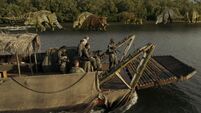Ireland in 50 Albums, No 29: Live and Dangerous, by Thin Lizzy (1978)
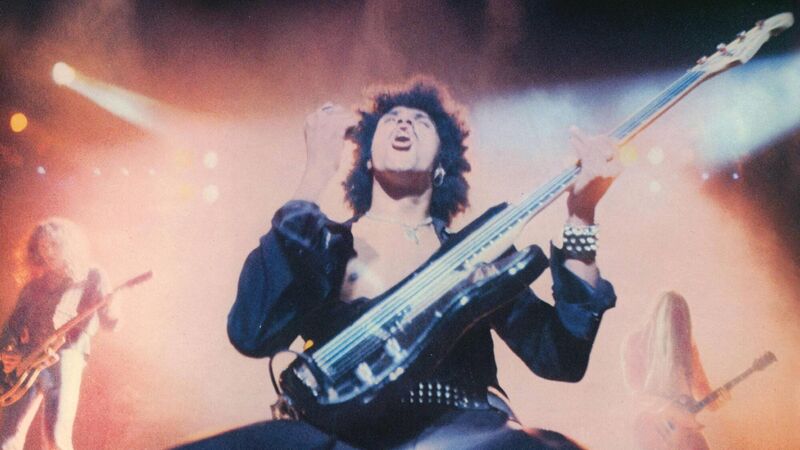
Phil Lynott on the cover of Live and Dangerous, by Thin Lizzy.
Brian Downey, Thin Lizzy’s drummer, first met Phil Lynott at school in Crumlin, a working class neighbourhood in Dublin. They started playing in a band together when Downey was little more than 13 years’ old, Lynott a year-and-a-half older. This was the early 1960s. The Christian Brothers didn’t think rock’n’roll was a proper way for teenage Irish boys to spend their time.
The pair got hauled into the school principal’s office one Monday morning for a lecture. The headmaster told them they had a choice: “What do you want to do? Do you want to get a good steady job with a trade, and be able to support a wife and children? Or do you want to be a dirty rock musician?”
No competition. A few years later, in 1970, the pair formed Thin Lizzy – using the name of a character, Tin Lizzie, from the Dandy comic – along with Eric Bell, a guitarist from Belfast. Thin Lizzy were a slow burn. They scored a surprise hit in 1972 with a rocked-up version of 'Whiskey in the Jar,' but the band came asunder when a burnt-out Bell walked off stage mid-song during a New Year’s Eve gig in 1973.
The group reset the following spring. Gary Moore joined briefly before they hit on the classic Thin Lizzy line-up: Lynott, Downey and two guitarists, the Californian Scott Gorham, and an 18-year-old Scot, Brian Robertson (who later played with Motörhead). Lynott wanted two guitarists in case one walked out again, which unwittingly led to the band’s signature “twin guitar” sound.
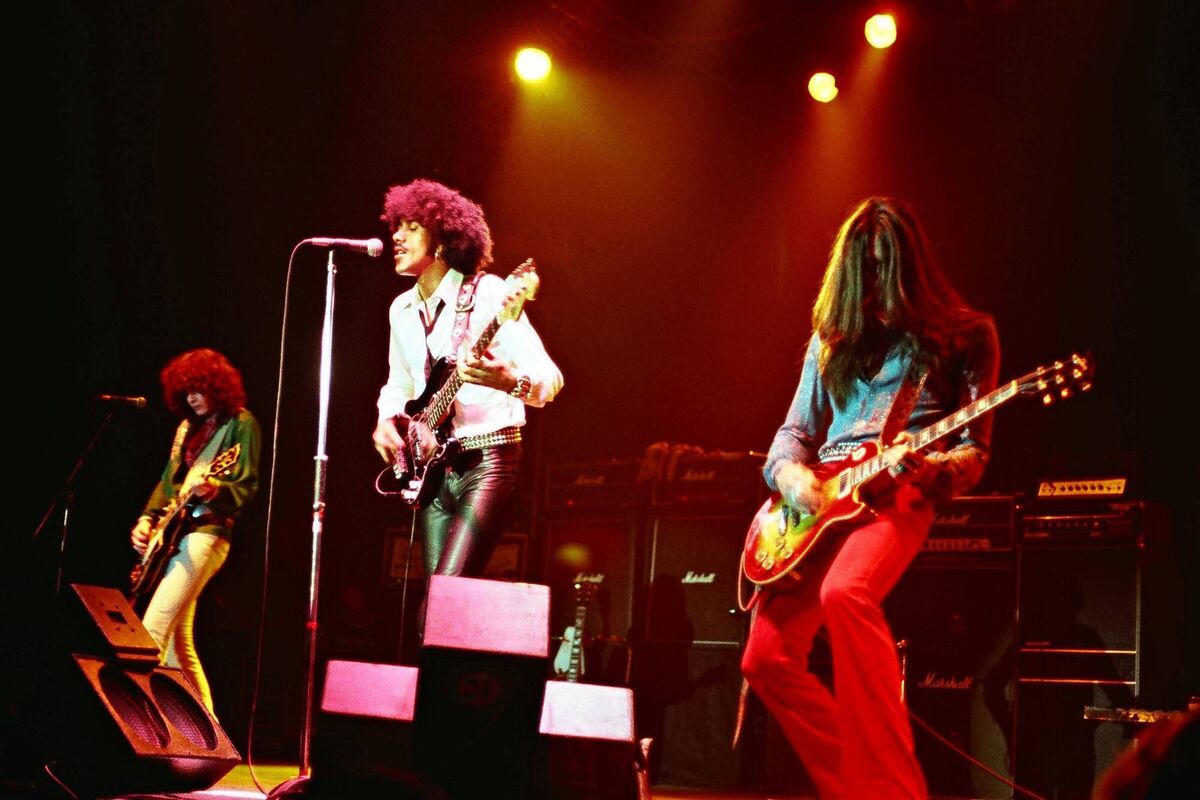
Their album, Jailbreak, released in March 1976, was a breakthrough moment, as it contained the hit single, 'The Boys Are Back in Town'. Within 14 months, they’d released a further two studio albums, including Bad Reputation in 1977, but all roads were leading towards their live album, Live and Dangerous, which came together early in 1978. By this point, the band was at the peak of their powers.
“Thin Lizzy amassed a clutch of hits from the different eras,” says Martin Popoff, Thin Lizzy biographer. “All of a sudden, when you get to an album like Live and Dangerous, they've got this history behind them, songs of all varieties – the percussion of complicated songs, melodic songs, the twin leads. All worked great on stage.
“Starting at the back, Brian Downey was a consummate drummer, with a light touch, jazzy. He's got a groove. Great with the cymbals so he's a great showman. Brian Robertson was the wildcard. Scott Gorham, with his long hair and being American, looked great."
As a frontman, Popoff rates Lynott as being up there with the likes of Freddie Mercury, Rob Halford or Mick Jagger. "Phil was able to turn in non-obvious vocal cadences even though he played bass at the same time – he was 50% of the band’s time-keeping yet he also sang. A drumming buddy said to me, ‘I can drum anything by Thin Lizzy but don't ask me to drum Thin Lizzy and try to sing at the same time because the vocals are so off-kilter to what's going on with everything else'."
The band’s drummer, Downey adds: “Phil was a mine of ideas, which came out of the blue. Somehow they’d fit into the song. Nothing surprised me when it came to his talent. He was great in the studio, a bit like a football manager, giving you a pep talk before you play.
“It was amazing to see how Phil operated. He’d amazingly sensitive ears. He could pick out the least bum note, and he’d say, “There’s a bit of a sour note there.’ Nobody else would notice it. He had an amazing ability to put a song together quickly as well, sometimes within a few hours, which is half the battle in a studio setting, especially in the early days when you were up against the clock.”
Thin Lizzy wanted to work with Tony Visconti, who produced Bad Reputation, their previous album, but Visconti didn’t have time to produce another studio album, as he was between a David Bowie album and other projects. The band held a summit meeting with Visconti in his Good Earth Studios, and hit on a compromise – a live album based on tapes accrued.
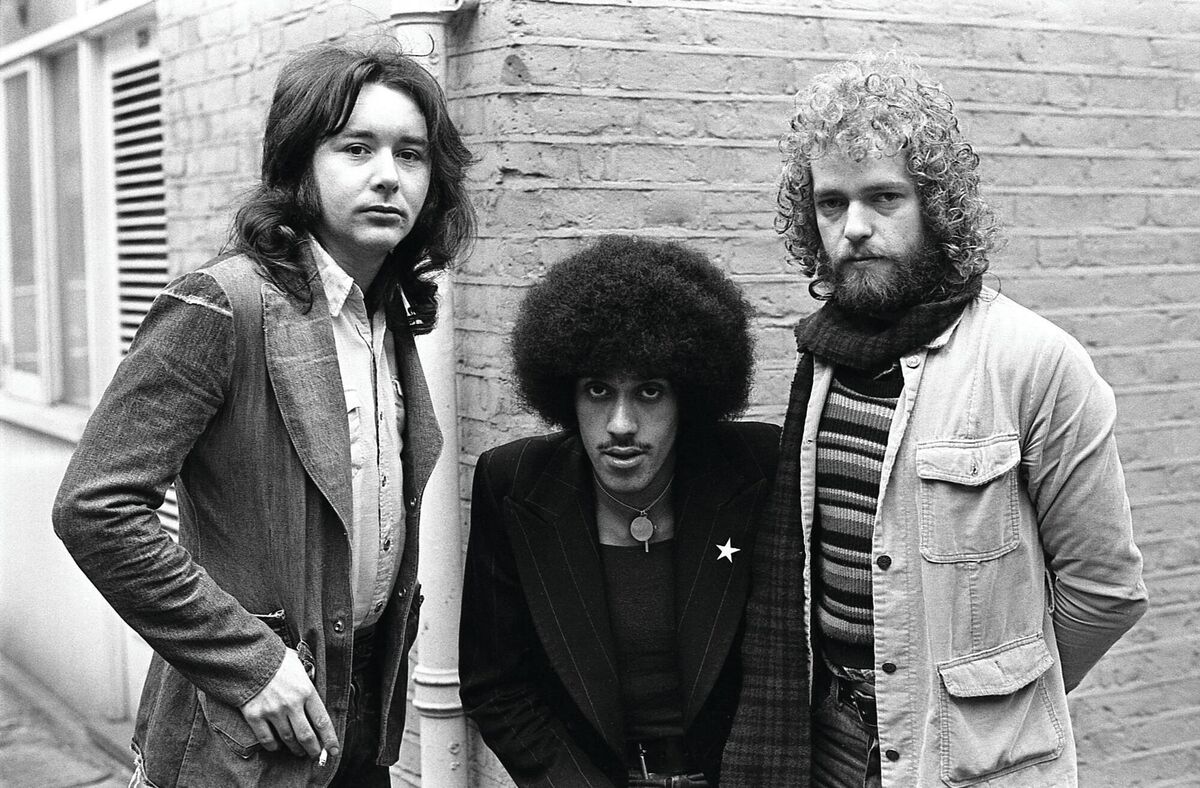
The guts of the live album was culled from a gig at London’s Hammersmith Odeon, November 1976; two shows at Philadelphia’s Tower Theater in October 1977 and a show later that month in Toronto. Gorham’s abiding memory of those shows is an incident on stage at the Hammersmith Odeon, known as the Apollo, a listed, art deco building close to London’s River Thames.
“It was during 'Still in Love with You',” says Gorham. “Back then, there were no crash barriers. We loved that – the closer, the more we could touch the audience, the better. I was on my solo. I walked up to the front of the stage. My feet were almost hanging over the edge.
“These two girls grabbed both my legs, and they've got their hands in my pants, and I'm getting a leg rub while I’m doing the solo. I'm thinking, ‘well, it can't get any better than this.’ But it got to the point where I needed to get back to my pedalboard because I had to get rid of an echo or delay, but they were not letting go. I was pulling one way; they're pulling another. Finally, they let me go and I went falling backwards.
“My hands came off the neck, only for an instant. I knew there was a big, hairy-ass clam on the recording now, but I'm thinking, we've got other nights to choose from. Guess what? Everybody else in the band goes, ‘No. We played well on that night. That's the one we want to use.’
“I’m looking at Tony [Visconti] going, ‘You gotta help me here, man.’ He said, ‘Don’t worry. We'll put a little edit in there and nobody will notice. Believe me, you notice there's an edit. Every time I hear it, I wanna cringe. That was one of the terrifying moments of that album for me.”
The debate about how much tweaking Visconti did – removing gremlins, re-recording vocals, replacing guitar parts, which is commonly done for live albums – has raged in music circles for years, including a claim by recording engineer Kit Woolven that audience sound from a Bowie concert in Philadelphia is weaved into the mix.
“When it came to the drums, Tony Visconti asked me,” says Downey, “and I said, ‘I'm happy with the drums. There's nothing you can do with a beat that's slightly out. It didn't affect the sound. I didn't want to overdub any drums, not even a cymbal beat. I left everything the way it was on the night. Everybody else picked out notes, overdubbing bits, to clean it up. Unfortunately, years later, he came out and said 75% of the album was overdubbed, and that’s not true. I don’t know where he got that figure from.”
Live and Dangerous – which, incidentally, featured Huey Lewis on harmonica on 'Baby Drives Me Crazy' – was released in June 1978. It reached number 2 in the UK album charts, being kept off top spot by the Saturday Night Fever soundtrack, one of the biggest-selling albums of all time. Despite not hitting the number 1 spot, Live And Dangerous has taken its place in history as arguably the seminal live album.
Live and Dangerous was Thin Lizzy’s last album to feature Brian Robertson, kicked out of the band because he slashed his hand in a nightclub brawl on the eve of a United States tour. Gary Moore took his place, and later, temporarily, Midge Ure.
Thin Lizzy recorded four more studio albums, but their popularity peaked once the 1980s got into full swing. Live and Dangerous was Thin Lizzy at their best, said Gorham, “before the bad drugs came in”.
In September 1983, they played their final gig in Nuremberg, Germany. In January 1986, Phil Lynott died in hospital of septicaemia and pneumonia, aged 36.
Phil Lynott was born to be a rock star – tall, good-looking, black. He walked down the street with a bounce. He oozed charisma. Being a front man, though, didn’t come naturally to him at the start of his Thin Lizzy career. He kept within himself on stage, lacking confidence. Things changed during a tour of the UK in 1972. Thin Lizzy were on the road supporting Slade, possibly the most popular band in Britain at the time, but failed to connect with their fans.
“On stage, we were laid back, not putting much effort into our show,” says Brian Downey, Thin Lizzy’s drummer. “I remember saying to myself, ‘Christ, this is a massive crowd, screaming, going crazy for Slade.’ After a few gigs, we weren’t going down too well. That riled Chas Chandler, Slade’s manager. He was a former bass guitarist with The Animals and the man who discovered Jimi Hendrix, Phil’s hero.
He came into the dressing room one night and read the riot act to Phil, for not moving on stage and engaging with the audience. Chas pulled him aside and said, ‘You need to start getting your act together or else you're off the tour. We didn’t bring you along to send the audience to sleep.’”
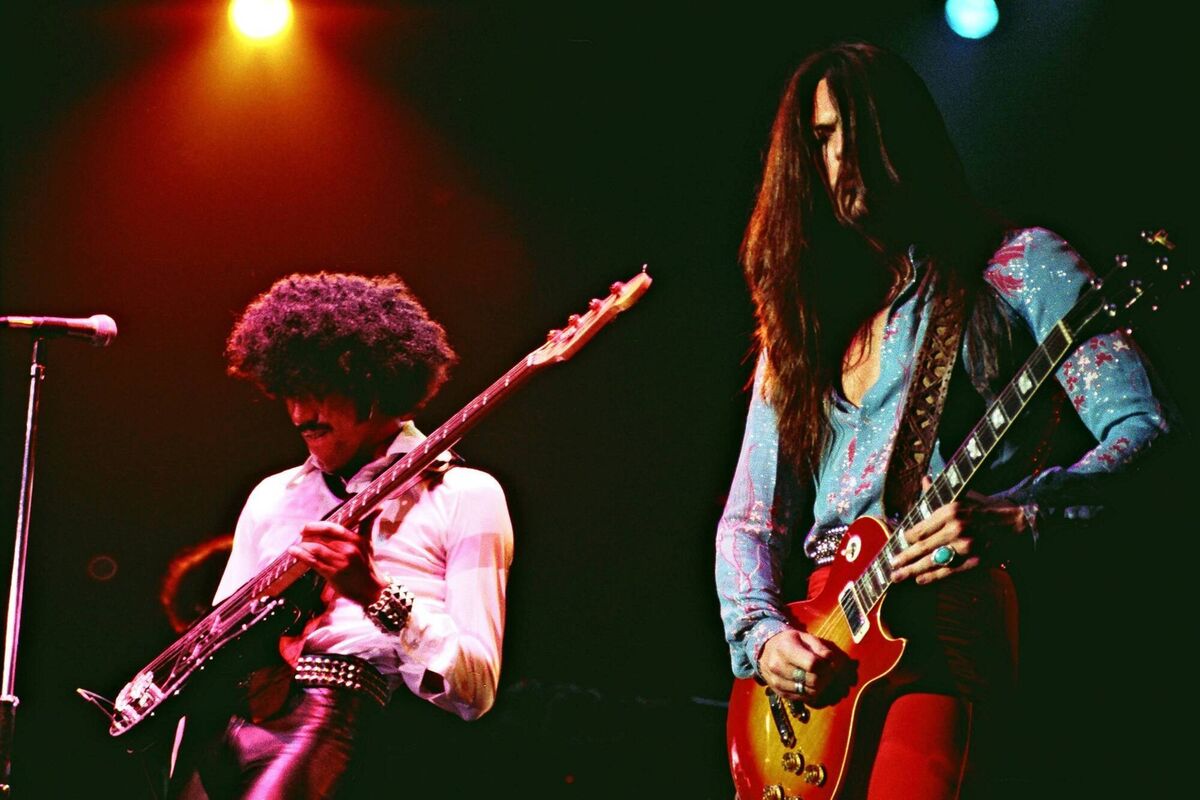
Lynott was devastated, on the verge of tears. His hero’s manager was telling him his band was no good. The dressing-down worked, however. “We went out the next night and jumped all over the place,” says Downey, “with bum notes everywhere, but it seemed to go down better than previously.”
A change came over Lynott. He studied nightly Noddy Holder, Slade’s frontman, from the wings, picking up ideas. Holder wore a goofy hat embroidered with mirrors on it; Lynott got a mirror for a budgie’s cage and screwed it onto his bass guitar; catching the spotlight enabled Lynott to shine a light on good-looking girls in the audience. The hardman stage persona, which thousands have aped since, took shape: all strut, holding his bass guitar like a shotgun, flirting with his audience on Live and Dangerous: “Is there anybody here with any Irish in them? Is there any of the girls who'd like a little more Irish in them?”
“He gave confidence to everybody else in the band,” says Scott Gorham, Thin Lizzy guitarist. “When you saw what he did, you thought, ‘OK, all bets are off. We can go for it.’ Phil so loved being on stage. He wanted everybody to see that. He didn't have any inhibitions. It was the main thing with Phil. His lyrics were so great, too, but when he got on stage, he showed everybody: ‘I'm not afraid of you. In fact, I fucking love you, and we're gonna have a great time tonight.’ Everybody felt that.”


